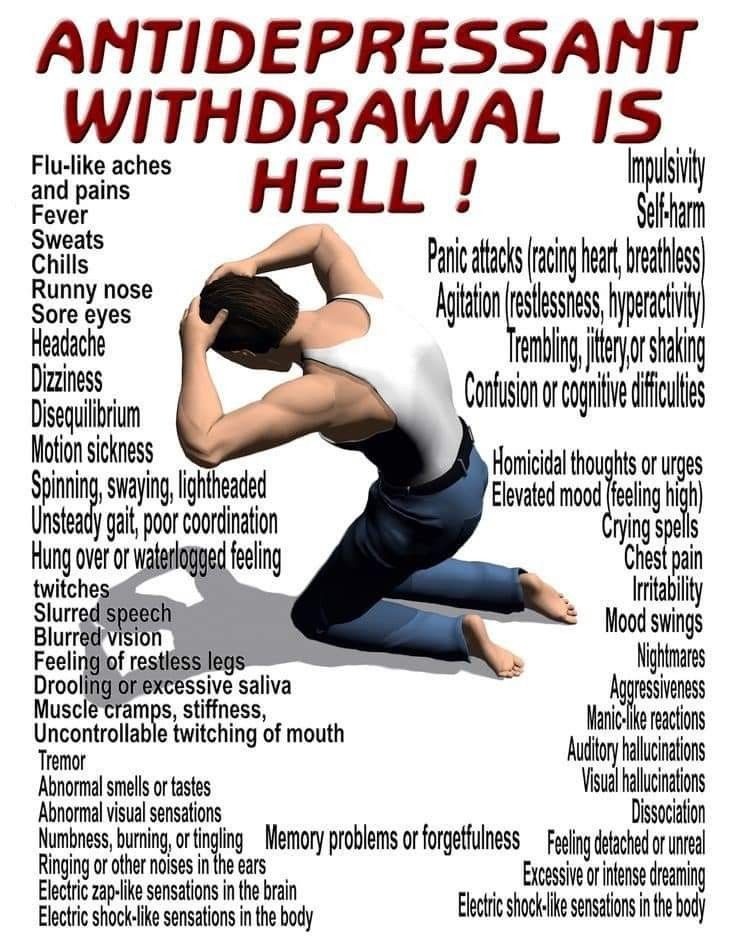
Contents
- 1 Cymbalta (duloxetine) vs. Effexor XR (venlafaxine)
- 1.0.1 Uses for Cymbalta vs. Effexor XR
- 1.0.2 Side effects of Cymbalta and Effexor XR
- 1.0.3 Withdrawal symptoms of Cymbalta and Effexor XR
- 1.0.4 Dosage of Cymbalta vs. Effexor XR
- 1.0.5 Drug interactions of Cymbalta vs. Effexor XR
- 1.0.6 Safety of Cymbalta and Effexor XR during pregnancy and breastfeeding
- 1.0.7 Summary
Cymbalta (duloxetine) vs. Effexor XR (venlafaxine)
Cymbalta (duloxetine) and Effexor XR (venlafaxine) are selective serotonin and norepinephrine reuptake inhibitor (SNRI) antidepressants. They are used for the treatment of pain, major depressive and anxiety disorders, diabetic peripheral neuropathy, fibromyalgia, and chronic musculoskeletal pain. Other SNRIs include milnacipran (Savella) and desvenlafaxine (Pristiq).
Uses for Cymbalta vs. Effexor XR
Cymbalta (duloxetine) uses
Cymbalta is used for the treatment of depression, generalized anxiety disorder, diabetic peripheral neuropathy pain, fibromyalgia, and chronic musculoskeletal pain.
Effexor XR (venlafaxine) uses
Effexor XR is used for the treatment of depression, depression with associated symptoms of anxiety, generalized anxiety disorder, social anxiety disorder, and panic disorder in adults.
Side effects of Cymbalta and Effexor XR
Cymbalta (duloxetine) side effects
WARNING
Suicidal Thoughts and Behaviors in Children, Adolescents, and Young Adults
- Patients with major depressive disorder (MDD) may experience worsening of their depression and/or the emergence of suicidal ideation and behavior (suicidality) or unusual changes in behavior.
- Suicide is a known risk of depression and certain other psychiatric disorders.
- There has been a concern that antidepressants may have a role in inducing worsening of depression and the emergence of suicidality in certain patients during the early phases of treatment.
The most common side effects of duloxetine include nausea.
Effexor XR (venlafaxine) side effects
Effexor XR can cause nausea, headaches, anxiety, insomnia, loss of appetite, dizziness, ejaculation disorder, sweating, dry mouth, and weight loss.
Cymbalta and Effexor XR serious side effects
- Sexual dysfunction, seizures, an increase in blood pressure, and increased risk of suicidal thinking and behavior.
Withdrawal symptoms of Cymbalta and Effexor XR
Cymbalta, Effexor XR, and other antidepressants can cause withdrawal symptoms if stopped suddenly. Symptoms include dizziness, headache, nausea, changes in mood, and changes in the sense of smell and taste.
QUESTION
Dosage of Cymbalta vs. Effexor XR
Cymbalta dosage
- The recommended dose for treating depression is 20 or 30 mg twice daily or 60 mg once daily.
- The recommended dose for anxiety disorder, pain associated with diabetic neuropathy, fibromyalgia, or chronic musculoskeletal pain is 60 mg daily.
- Doses greater than 60 mg/day do not provide additional benefits. However, the maximum dose for depression or anxiety disorder is 120 mg/day.
Effexor XR dosage
Venlafaxine should be taken with food at individually directed doses.
- The antidepressant effects are not maximal for 1-2 weeks.
- Dosing should be reduced gradually to avoid withdrawal symptoms.
- For people with difficulty swallowing tablets or capsules, Effexor XR capsules can be opened and the contents sprinkled onto food.
- The dose for treatment of depression using the immediate release formulation is 75 to 375 mg daily divided in 2 or 3 doses.
- Generalized anxiety and panic disorder are treated with 37.5 mg to 225 mg once daily using the extended release formulation.
- Social anxiety is treated with 75 mg daily using the extended release formulation.
Drug interactions of Cymbalta vs. Effexor XR
Cymbalta (duloxetine) drug interactions
- Duloxetine should not be used in combination with a monoamine oxidase inhibitor (MAOI) or within 14 days of discontinuing the MAOI.
- Combining SNRIs with MAOIs may lead to serious reactions. Similar reactions may occur with other drugs that affect serotonin in the brain.
- Fluoxetine, paroxetine, fluvoxamine, and quinidine increase blood levels of duloxetine.
- Combining duloxetine with drugs associated with bleeding may increase the risk of bleeding.
- Duloxetine may reduce the breakdown of desipramine, leading to increased blood concentrations of desipramine.
Effexor XR (venlafaxine) drug interactions
- Venlafaxine should not be used in combination with a monoamine oxidase inhibitor (MAOI) or within 14 days of discontinuing the MAOI.
- Combining SNRIs with MAOIs may lead to serious reactions. Similar reactions may occur with other drugs that affect serotonin in the brain.
- Combining venlafaxine with drugs associated with bleeding may increase the risk of bleeding.
- Most medications affecting the brain have the potential to slow reflexes or impair judgment. Caution is advised especially early in the course of treatment.
- Safety has not been established in children below the age of 18 years.
Safety of Cymbalta and Effexor XR during pregnancy and breastfeeding
Cymbalta safety
- Duloxetine is excreted into the milk of lactating women. Breastfeeding while on duloxetine is not recommended.
Effexor XR safety
- The effects of venlafaxine on the fetus during pregnancy are unknown.
- It is not known if venlafaxine is secreted in breast milk, and therefore, its effect on nursing infants is unclear.
Summary
Cymbalta (duloxetine) and Effexor XR (venlafaxine) are SNRI antidepressants used for the treatment of depression, anxiety disorders, and pain. Cymbalta also treats fibromyalgia and neuropathy. Common side effects include headaches, insomnia, anxiety, nausea, and dry mouth.


